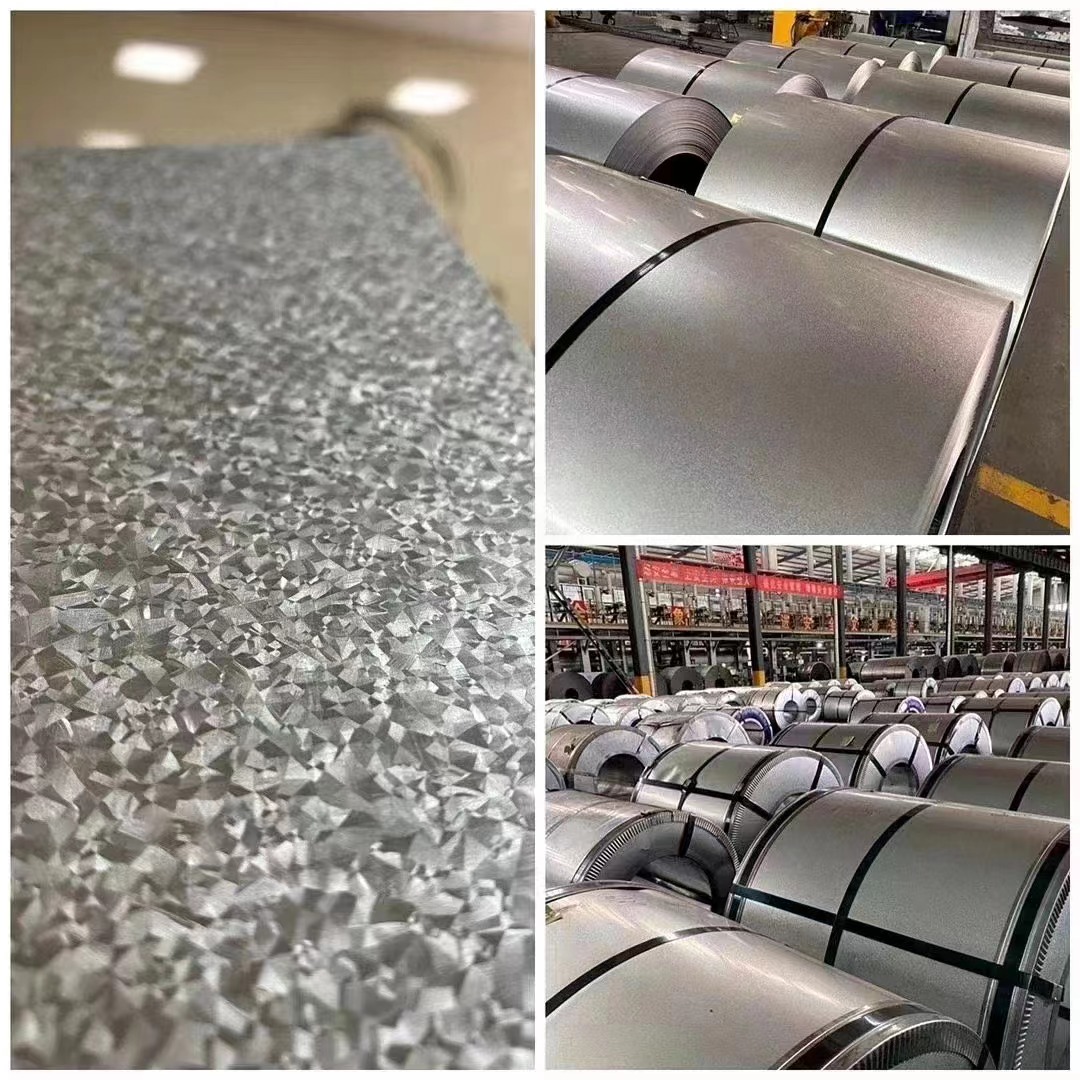
Galvanized Steel Trade amid Geopolitical Transformations: Risk Hedging and Value Reconstruction
I. “Regional Clustering” of Global Supply Chains and Hub Construction
In 2025, driven by US-China technological decoupling and Russia-Ukraine energy standoffs, the global galvanized steel supply chain is accelerating its shift from “globalized division of labor” to “regional clustering.” ASEAN, leveraging tariff advantages under the Regional Comprehensive Economic Partnership (RCEP), has become the biggest beneficiary—infra-driven galvanized steel demand in Vietnam and Indonesia grows 25% annually, pushing China’s export share to ASEAN up to 38%. Chinese enterprises are building regional hubs through a “port + industrial park” model: Shandong Iron & Steel Group’s 1.5-million-ton deep-processing base in Malaysia’s Kuantan Port achieves end-to-end local production from hot-rolled coils to PV brackets, eliminating Malacca Strait transportation risks and reducing logistics costs by 12%.
The “friend-shoring” strategy promoted by Europe and the US has spawned new manufacturing centers in Mexico and Turkey. Nucor Steel’s new galvanizing line in Monterrey, Mexico, supplies high-strength galvanized steel for Tesla’s Texas factory under USMCA zero-tariff policies, cutting transportation cycles by 40%. Turkey, leveraging its geopolitical advantage, has become the EU’s “safety backup” for galvanized steel, with 33% export growth to Europe in 2025, though it faces risks from reliance on Chinese raw materials (60% zinc ingot imports).
 II. Escalation of Green Trade Barriers and Practical Carbon Tariff Responses
II. Escalation of Green Trade Barriers and Practical Carbon Tariff Responses
In the first year of the EU’s Carbon Border Adjustment Mechanism (CBAM), Chinese galvanized steel exports faced a “screening effect”: enterprises meeting the new EN 10346:2025 standard (carbon footprint ≤1.8 tons CO₂/ton) received a 30% tariff reduction, while others faced a 15% punitive tariff. Baowu Group reduced its Zhanjiang base’s galvanized steel carbon footprint to 1.2 tons CO₂/ton via blockchain traceability, becoming one of the first Chinese enterprises on the EU’s green procurement list and boosting high-end exports to Europe by 55% in 2025.
The “steel component traceability” clause in the US Inflation Reduction Act 倒逼 (forced) Chinese enterprises to build full-chain compliance systems. Hegang Group, supplying new energy vehicle galvanized steel to GM’s North American plants, recorded 218 data points from iron ore mining to coating processing via blockchain, becoming the first non-US enterprise to pass the US Department of Commerce’s “low-carbon steel certification” and securing a 500,000-ton annual order.
III. “Crisis-Driven Opportunities” in Conflict Zones and Risk Management
The “alternative markets” spawned by the Russia-Ukraine war show polarized trends: Russia redirected exports to Central Asia and the Middle East, with a 70% increase to Saudi Arabia in 2025, but faced an 8% price hike due to extended logistics cycles (from 30 to 65 days); Ukraine became a Western reconstruction test bed, where the USUSAID-led “Kiev New City Plan” prioritized UL 2703-certified galvanized steel—China’s Ansteel Group won bids with -40℃ resistant coatings, commanding a 10% premium over European competitors.
Special demands from the India-Pakistan conflict created niche markets: India’s Ministry of Defense’s “Border Fortress Plan” required NIJ III-level bulletproof galvanized steel plates, prompting China’s Taigang Group to develop “duplex steel composite coatings” with 20% improved ballistic performance, securing a 150,000-ton emergency order in 2025. However, such orders require strict political reviews, necessitating enterprises to establish “geopolitical risk assessment committees” for dynamic strategy adjustment.
 IV. High-End Market Breakthroughs Driven by Technological Iteration
IV. High-End Market Breakthroughs Driven by Technological Iteration
Nanotechnology and smart coatings have become core weapons for high-end market penetration. Shougang Group’s “graphene-modified galvanized coating” technology, with over 1,500-hour salt spray resistance, passed Germany’s VDA 233-102 certification and entered the global supply chains of Mercedes-Benz and BMW, priced 40% higher than ordinary galvanized steel. This technology was also used in Qatar World Cup venue maintenance, extending steel structure lifespans by 15 years in high-sand environments.
Digital tools are reshaping trade rules: The “Global Galvanized Steel Trading Platform” launched by the China Iron and Steel Association integrates AI tariff calculators, carbon footprint simulators, and geopolitical risk heatmaps, with 3,200 registered enterprises and over $20 billion in transaction volume in 2025. Platform data shows that enterprises using digital twin technology for coating lifespan prediction achieve a 28% higher order conversion rate and 65% customer repurchase rate.
V. Building a “Three-Dimensional Value Network” for Strategic Breakthroughs
1. Market Dimension: Establishing a “Risk Hedging Portfolio”
- Core Markets (Southeast Asia): Focus on cost-effectiveness—Panhua Group’s Philippines project locks in 70% of ASEAN’s PV bracket steel demand;
- High-End Markets (Europe/US): Prioritize low-carbon technologies—Hegang Group enters the Paris Olympics venue supply chain via EU EPD (Environmental Product Declaration) certification;
- Buffer Markets (Middle East/Africa): Implement local production—Shagang Group’s galvanizing line in Egypt’s Suez Economic Zone enjoys 15 years of tax exemption.
2. Technology Dimension: Creating “Compliance Technology Packages”
- For the EU: Develop zinc-aluminum-magnesium coatings (meeting EN 10346 highest grade) + blockchain carbon tracing;
- For the US: Develop high-strength low-alloy galvanized steel (complying with AISI G90) + UL certification;
- For Emerging Markets: Promote weather-resistant galvanized steel (meeting ISO 12944 C5-M) + cost-performance advantages.
 3. Ecosystem Dimension: Building a “Geopolitical Resilience Network”
3. Ecosystem Dimension: Building a “Geopolitical Resilience Network”
- Resource End: Chinalco signs a 20-year zinc ore off-take agreement with the DRC, ensuring 30% raw material self-sufficiency;
- Logistics End: Leases Pier 2 of Greece’s Piraeus Port for dedicated galvanized steel handling, reducing Mediterranean transport cycles by 15 days;
- Policy End: Joins WTO negotiations on the Agreement on Steel Subsidies and promotes a “Low-Carbon Galvanized Steel Technology Sharing Platform.”
At the intersection of a century of geopolitical transformation and industrial revolution, the core competitiveness of China’s galvanized steel trade has shifted from “scale expansion” to “value reconstruction.” By controlling regional hubs, breaking through with green technologies, and solidifying ecological networks, the industry can not only withstand geopolitical black swans but also claim a dual role as a “technical rule-maker” and “green transition leader” in the global steel value chain. The key to future competition lies in transforming geopolitical risks into institutional advantages and building a sustainable new paradigm of globalization amid volatility.





